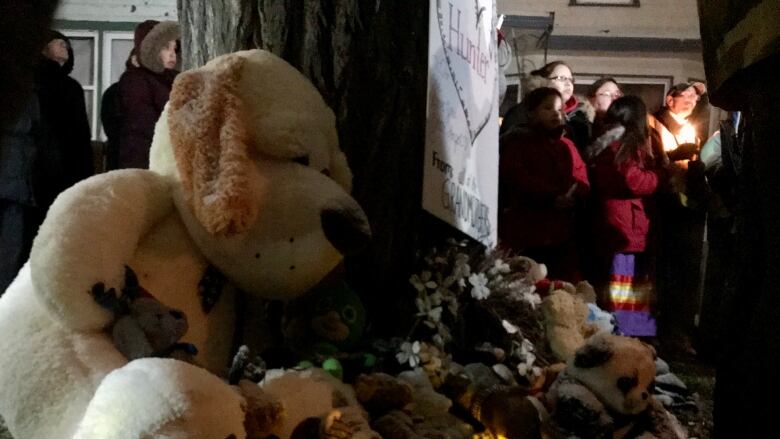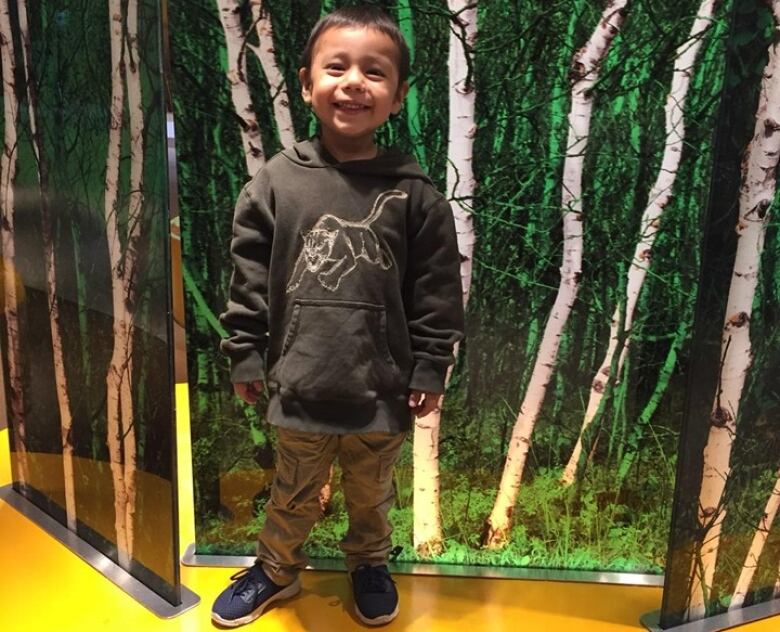Hunter's legacy: 3-year-old's death highlights urgent need to address domestic violence in Manitoba
Deal with violence now 'or continue to look aside until it's time to bury more innocent victims': Kimlee Wong

The killing of a three-year-old in his bed in Wininpeg last month has rightly horrified many. A man who allegedly had a history of beating his partner is accused of killing her child, Hunter Smith-Straight.
People are hating on this man now, but where was the outrage when he was accused of abusing the woman he said he loved?
The myth that male domestic abusers simply lose their temper is still repeated by many, including some police officers, social workers and judges. Many a survivor has been asked, "what did you do to make him so mad?"
Fact: domestic violence is a pattern of behaviours with the intent to control and dominate over intimate partners. Physical violence is one tacticusing children is another.
Domestic violence survivors have tried to warn people about the threat abusers pose to children for decades. In the 1980s, domestic violence workers and survivors in Duluth, Minn., created a model called the power and control wheel, to show the pattern and intent of domestic violence.
The goal of power and control is at the centreof the wheel, with eight spokes representing the most common tactics used to reach that goal. Physical and sexual violence, real or threatened, keep everything in place (the rim of the wheel).
Bias against survivors
Domestic violence advocates and police know that the most dangerous time for a woman is when she is leaving, or after she's left the relationship. Yet societal bias against survivors is so strong that mothers who ask for protection in family courts are more likely to lose custody to her abuser than find protection.
The myth that family courts are biased toward mothers revictimizes women and children and perpetuates the cycle of violence.
We need to stop making excuses for the men in our lives and do better at holding them accountable. Accountability and compassion are not mutually exclusive.
In B.C.,an investigation into a psychologist accused of dismissing women's fears of violence in his workhighlights a crisis playing out in courtrooms across the country even when violence is well documented, family courts and their "experts" refuse to believe mothers or children when deciding custody.
A 2016 Ontario survey found that the majority of both men and women still believe a woman disclosing domestic violence is either lying or exaggerating.
Courts label such cases "high-conflict," hiding the real issue and putting the responsibility to "get along" on both parents. When the mother cannot get her abuser to co-operate, she is blamed as the problem. Psychologists have likened mothers in these situations to prisoners of war forced to negotiate their own freedom without any weapons or power.
Recently, in Montreal, a mother took her life after being denied asylum with her children. The woman, a Canadian citizen from Quebec, said she fled to Canada with her children to protect them from a violent ex-spouse in the U.S.
It's not the weight of inescapable violence that is too much to bear. It's knowing what her children are going through, being unable to protect them, and then being blamed and punished while abusers are treated as heroic victims.
The effects of exposure to violence
While mothers are dismissed, shamed and legally punished, science confirms what they have been saying domestic violence is child abuse.
Children's brains and bodies do not differentiate between physical and verbal abuse. Even when children are not physically harmed, their exposure to violence in the home causes post traumatic stress and brain injury markers as if they were being physically hurt.
The fact that the man now accused of killing Hunter had anordernot tocontact the boy's mothersuggests there may have been violence in Hunter's life before his death.

Manitoba has the second-highest rate of domestic violence in the country (nearly double the national rate) and domestic violence represents the highest call volumes to the Winnipeg police service.
We need to stop making excuses for the men in our lives and do better at holding them accountable. Accountability and compassion are not mutually exclusive.
The benefits of addressing domestic violence ripple out to positively impact things likeaddictions, vandalism, child abuse/neglect, homelessness, thefts, mental illness, chronic health disease by addressing it, we would be tackling conditions that give rise to our most pressing societal ills.
In the shadow of tragedy lies opportunity. What if Hunter's legacy was to wake up a province that has been asleep for too long? What if his death marked the moment Manitoba pivoted from one of the worst provinces in the country for women to one of the best?
Will we start believing domestic violence survivors and work with them to break the cycle of violence?
It's up to each of us whether we'll rise to the challenge, or continue to look aside until it's time to bury more innocent victims.
This column is part of CBC's Opinion section. For more information about this section, please read this editor's blog and our FAQ.












_(720p).jpg)


 OFFICIAL HD MUSIC VIDEO.jpg)
.jpg)



























































































